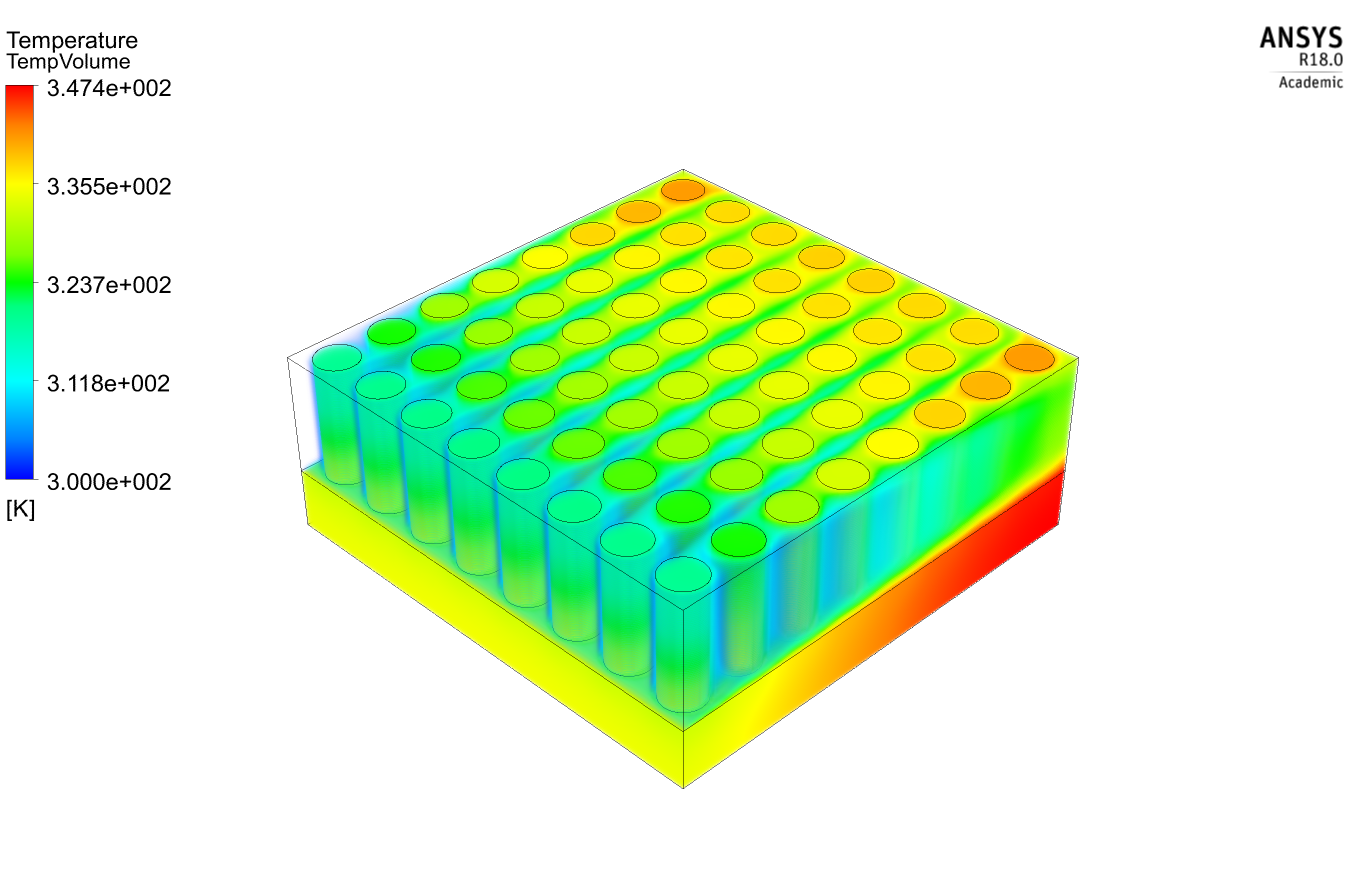-
-
May 6, 2021 at 7:50 pm
Karthikkurinji
SubscriberHello all,
I have this setup shown below
May 7, 2021 at 2:15 pmKarthik Remella
AdministratorHi If you estimate the surface integral of the Total Surface Heat Flux, you should be able to obtain the net heat crossing these surfaces.
Karthik
May 7, 2021 at 3:27 pmKarthikkurinji
SubscriberDear Karthik I tried that. But it shows it as zero. Moreover, I could not create the planes in the FLUENT tab. I can only create these in CFD-Post, but there again, I don't know how to find it because there is no Total heat flux in the function calculator. I have attached images of the panels here for a better understanding.
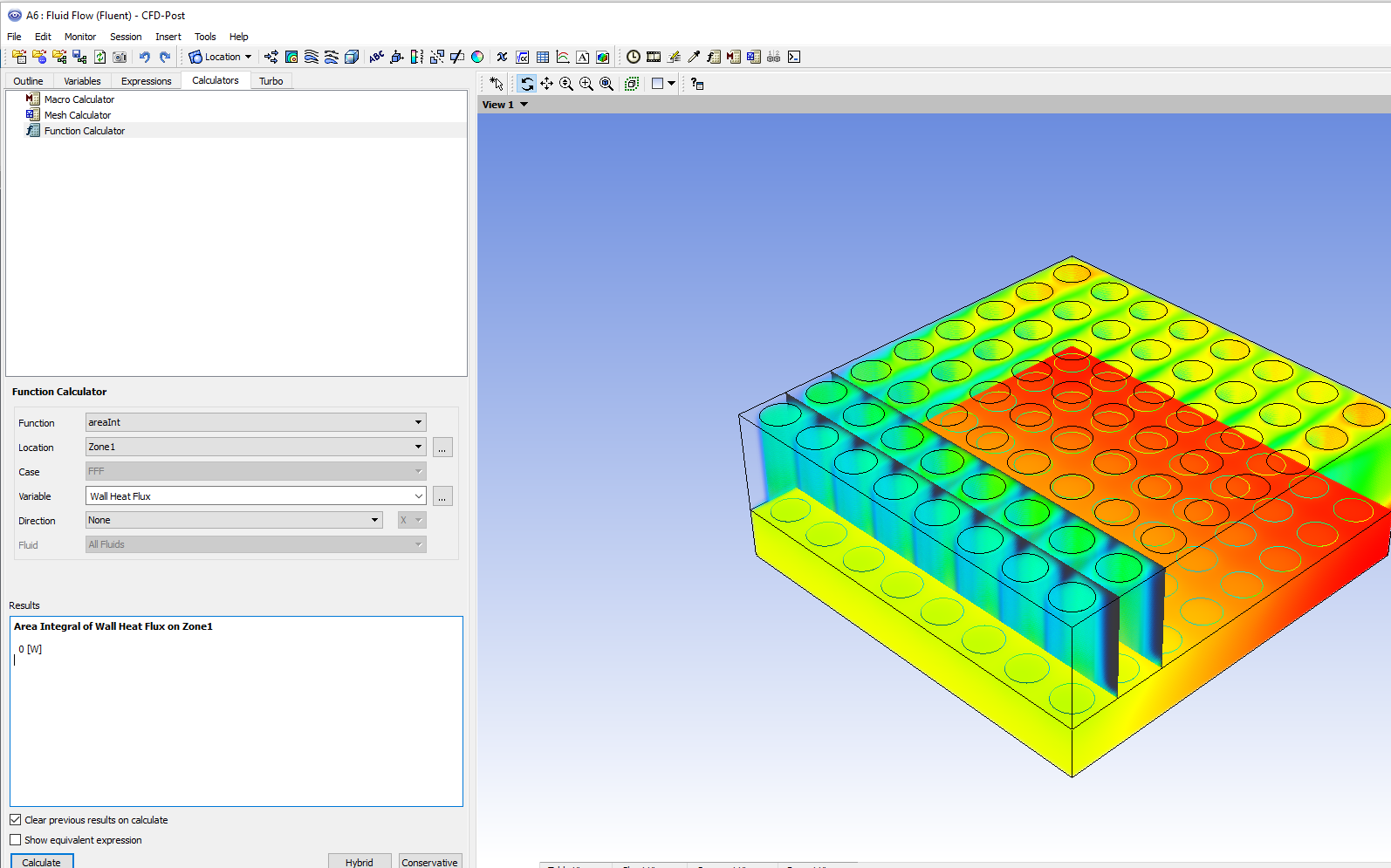
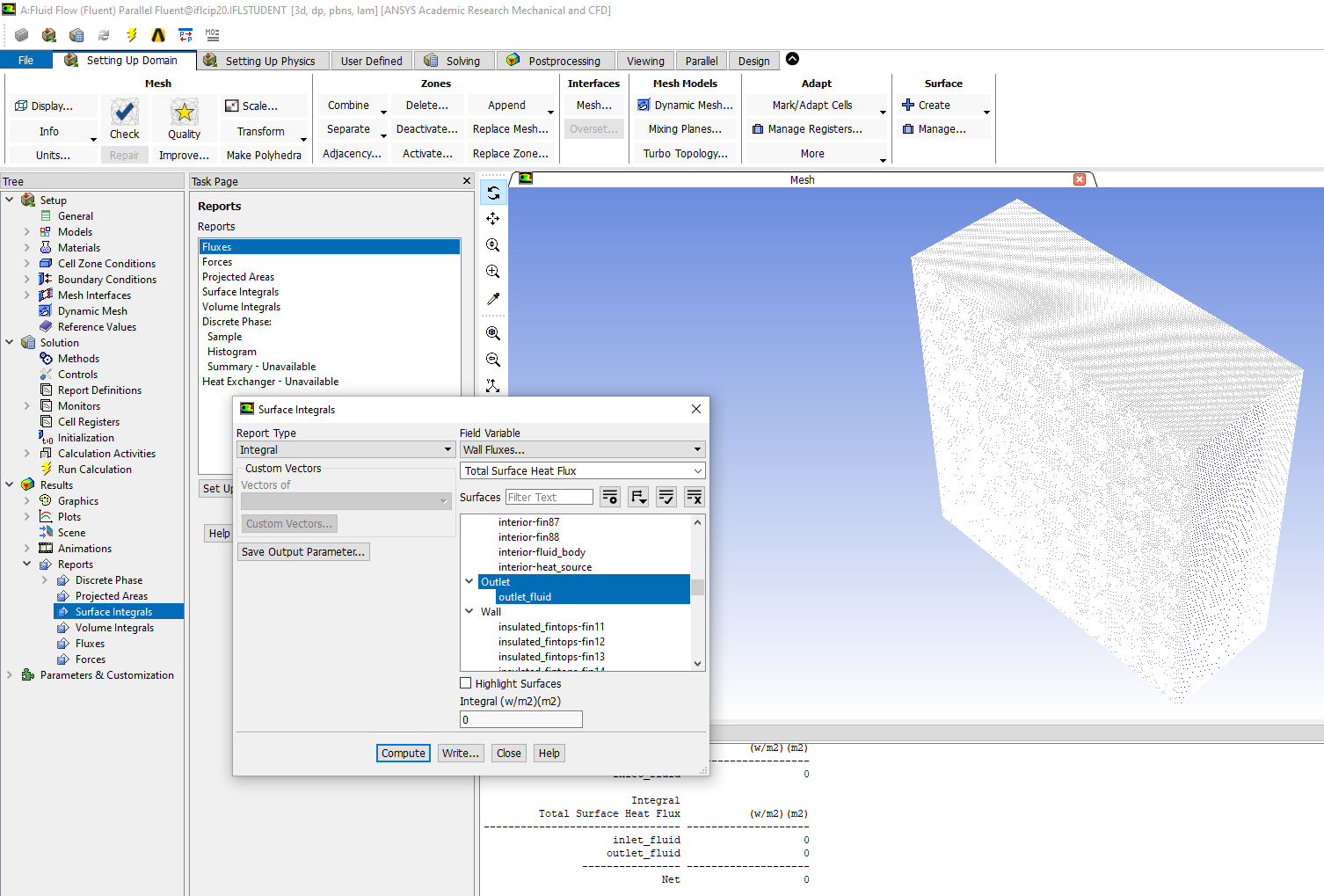
Thanks again Karthik
May 7, 2021 at 3:43 pmRob
Forum ModeratorIn Fluent use iso-surfaces of mesh and select the fluid region when you create the surface. Repeat for the solid surface. You can then see the flux (suspect it's not available) but you will get the temperature values (mass weighted mean) along with flow rate to estimate the energy in the fluid and solid zones at each position.
May 8, 2021 at 1:14 amKarthikkurinji
SubscriberHi Rob Thanks for introducing iso-surfaces. I did try that. I created an Iso-surface at the inlet itself. I extracted the mass-weighted average of the static temperature and also the mass flow rate. The values were :
T_inlet = 300.09743 K
m_dot = 0.003181 Kg/s
Cp_water = 4000 J/KgK ( i have manually input it as 4000 in the material property)
Q_dot = m_dot x Cp x Delta_T ( In my case, 12.8 J/Ks x Delta_T)
Delta_T is the problem area.
As you can see in the below-attached image(also attached the iso-surface values attained), I have the heat transfer at the inlet is 23.35 W. I do not understand how it can be that value.
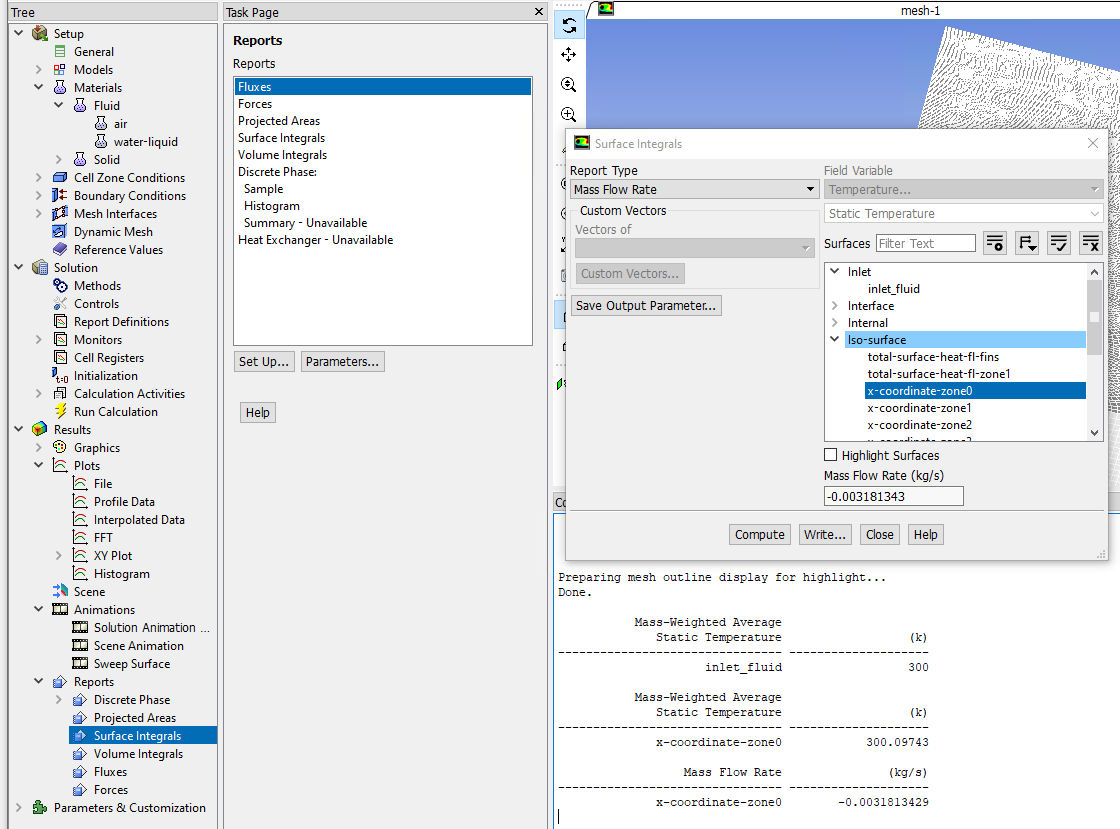
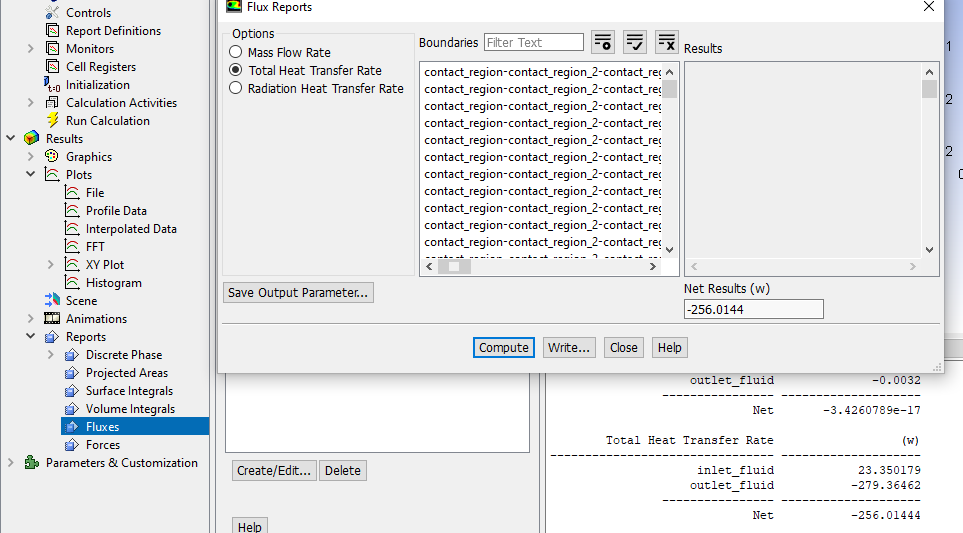
Thanks Karthik
May 10, 2021 at 12:36 pmRob
Forum ModeratorThe fluxes on the outer flow boundaries are relative to a reference value, if you use Q = m cp dT you should find the reference is around 298.15K.
May 10, 2021 at 7:19 pmKarthikkurinji
SubscriberOh Right. Thanks !
Viewing 6 reply threads- The topic ‘Calculating heat transfer rate in fluid cross section regions’ is closed to new replies.
Innovation SpaceTrending discussions- air flow in and out of computer case
- Varying Bond model parameters to mimic soil particle cohesion/stiction
- Eroded Mass due to Erosion of Soil Particles by Fluids
- I am doing a corona simulation. But particles are not spreading.
- Centrifugal Fan Analysis for Determination of Characteristic Curve
- Guidance needed for Conjugate Heat Transfer Analysis for a 3s3p Li-ion Battery
- Issue to compile a UDF in ANSYS Fluent
- JACOBI Convergence Issue in ANSYS AQWA
- affinity not set
- Resuming SAG Mill Simulation with New Particle Batch in Rocky
Top Contributors-
4052
-
1482
-
1308
-
1156
-
1021
Top Rated Tags© 2025 Copyright ANSYS, Inc. All rights reserved.
Ansys does not support the usage of unauthorized Ansys software. Please visit www.ansys.com to obtain an official distribution.
-
The Ansys Learning Forum is a public forum. You are prohibited from providing (i) information that is confidential to You, your employer, or any third party, (ii) Personal Data or individually identifiable health information, (iii) any information that is U.S. Government Classified, Controlled Unclassified Information, International Traffic in Arms Regulators (ITAR) or Export Administration Regulators (EAR) controlled or otherwise have been determined by the United States Government or by a foreign government to require protection against unauthorized disclosure for reasons of national security, or (iv) topics or information restricted by the People's Republic of China data protection and privacy laws.

